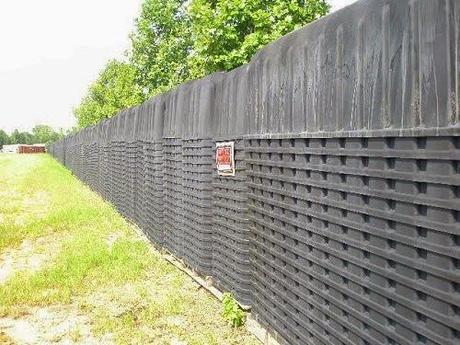
The AP reports that on Wednesday, Oct. 7, 2014, Thomas Eric Duncan died in Dallas, a little more than a week after his illness exposed gaps in the nation’s defenses against the disease and set off a scramble to track down anyone exposed to him.
Duncan is the first confirmed case of Ebola in the United States — the terrible hemorrhagic fever that has no cure and a 60-90% fatality rate.

Thomas Eric Duncan (from a Facebook photo)
42-year-old Duncan, a native of Liberia in West Africa, traveled to Dallas, Texas, from Nigeria on United Airlines (via Brussels and Washington Dulles), after he had been infected with the virus. But since he wasn’t exhibiting symptoms, U.S. Customs allowed him into the United States — a policy that the Obama administration is still continuing.
He arrived in Dallas on Sept. 20. Several days later, he showed the first flu-like symptoms of Ebola and sought help from Texas Health Presbyterian Hospital on Sept. 25. Although he told the hospital staff he had been in Ebola-ravaged West Africa, doctors sent him home. Two days later, when his condition had worsened, showing the unmistakable symptoms of Ebola of fever, vomit, and diarrhea, Duncan was finally admitted into the hospital. He was kept in isolation and given an experimental antiviral drug.
By then, it was too late, according to Dr. Phil Smith, the director of the biocontainment center at the Nebraska Medical Center where an NBC News freelance cameraman is being treated for Ebola. Smith said getting early treatment is key to surviving Ebola. When a patient reaches the point of needing dialysis and respiratory help, as Duncan did, there may be little doctors can do.
Second man in Dallas showing Ebola symptoms
Meanwhile, a second person in Dallas is showing signs of Ebola infection and has been hospitalized in the same Texas Health Presbyterian Hospital.
CBS Dallas/Fort Worth reports that yesterday, Oct. 7, Michael Monnig, a Dallas County Sheriff’s deputy, was transported from a Frisco Care Now facility to the hospital.
The clinic and the City of Frisco initially reported that Monnig was “exhibiting signs and symptoms of Ebola.” He was complaining of “stomach issues.” His children said their dad had awaken yesterday morning feeling sore and a little nauseated.
Monning was not one of the 48 people being monitored by federal, state and local health officials because he never had direct contact with Duncan. But Monnig did enter the apartment where Duncan had stayed before being admitted to the hospital. His son said Monnig “was in the apartment for 30 minutes, which we were told is no chance to contact the virus.”
CDC’s “hermetically sealed casket” and FEMA coffins
Jason Sickles reports for Yahoo News today that Duncan’s body will be cremated. Dr. David Lakey, Texas health commissioner, said in a written statement that “The cremation process will kill any virus in the body so the remains can be returned to the family. No protective gear is needed to handle the remains after cremation.”
In August, the Centers of Disease Control and Prevention had published a document titled “Guidance for Safe Handling of Human Remains of Ebola Patients in U.S. Hospitals and Mortuaries,” which states that “the body should be wrapped in a plastic shroud” and immediately placed in two thick and zippered leakproof bags for transport to the morgue. There should be no autopsy or embalming. The “remains should be cremated or buried promptly in a hermetically sealed casket” that is airtight and secure “against the escape of microorganisms.”
However, Wayne Cavender, an instructor and administrator at the Dallas Institute of Funeral Service who has been in the funeral business for 28 years, says he had never come across airtight caskets. He said, “The sealer caskets that they sell are not a guaranteed-type of sealing issue. It’s not completely airtight because you have to have a way to open them up and so forth. It’s not like it’s vacuum-sealed.”
Which brings us to those mysterious FEMA coffins.
Hundreds of thousands of airtight “coffin liners” had been seen stacked in a field in the middle of Madison, Georgia in close proximity to Atlanta and the home of the CDC.

Here’s a chilling video taken in 2005 by Dale Bohannon, an eye-witness of 125,000 CDC disposable coffins or casket liners stacked 15 high in a field in Madison, Georgia. But the “liners” are big and can contain several bodies. You have to see this video, if only to see the stacks and stacks and stacks of those black coffins for yourself.
Brandon Smith writes for Activist Post:
The CDC coffins in Madison, Georgia, though, ARE designed to prevent spread of infection. In fact, the patent for these coffins confirms that they are meant for the burial or cremation of bodies exposed to infectious diseases.
You can read the patent here: https://www.scribd.com/doc/17690179/Multi-Functional-Cremation-Container-For
This would suggest that the CDC has stockpiled such coffins in places like Madison, Georgia specifically in preparation for a viral outbreak. Meaning, the CDC has been expecting the deaths of hundreds of thousands of Americans due to infection for at least the past six years. That is a LONG period of preparation. Such preparation requires certainty, not hypothesis, especially where the federal government is involved.
Our government was so certain of a viral catastrophe they purchased fields full of sealing coffins to be ready for it; not to prevent it, but to have the means to clean up after it. Let that thought settle for a moment, and then read my latest article, ‘An Ebola Outbreak Would Be Advantageous For Globalists’, to understand the bigger picture…
Note the patent for the “multi-functional cremation container” specifically says the container is functional as “a pathogen barrier.”
Is Brandon Smith unduly paranoiac? Draw your own conclusions.
H/t FOTM’s MomofIV
~Eowyn

